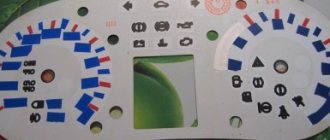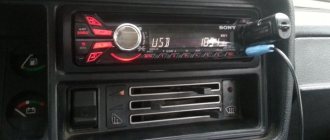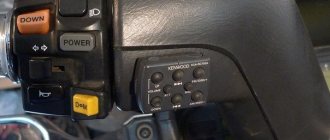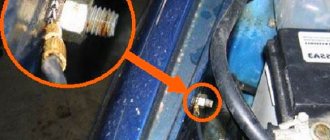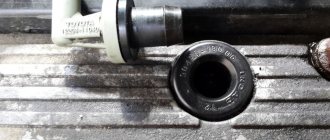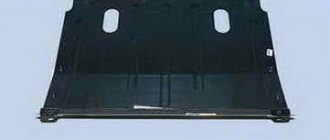Additional lighting is a fairly popular tuning option. Moreover, you can do this yourself, using a standard set of tools and available consumables.
Illumination is mainly done purely for aesthetic reasons. But there is also some practicality here. The only question is how exactly the system will be implemented.
To implement the idea with your own hands, you will need basic skills in working with electricity. If you follow the instructions and recommendations, very soon your car will sparkle with new colors. And in the literal sense of the word.
Backlight options
Motorists perceive the concept of footwell lighting in a car somewhat differently.
Basically we are talking about the following options:
- Turn on the car lights when the door is opened. That is, the system is mounted at the bottom of the door, and the light is directed to the ground. The practicality of such a solution is minimal. Although some automakers install such lighting from the factory, displaying the logo of the car brand.
- Lighting in the feet. There is no need to open or close the door anymore. The light is directed towards the pedal assembly area. Looks impressive. This way you can see what is happening under your feet. This helps a beginner to better navigate the pedals in the dark.
Objectively, it is the second option that is more practical and preferable than illumination when opening a car door. But no one is stopping you from making sure that when you open the doors in the car, the asphalt lighting turns on, displaying the car company logo or some other image there. But the lighting of the legs is not only visually impressive, but also practical in certain situations.
The lighting system is implemented in different ways. You can choose a different color, even provide a color music effect. But when moving, it will certainly be distracting. Therefore, it is more correct to make the necessary lighting so that it helps during trips and makes it easier to change the position of your feet on the pedals.
Backlighting in a car: if it’s not prohibited, then it’s allowed
Clause 3.1. The traffic rules prohibit the operation of a vehicle if “the number, type, color, location and mode of operation of external lighting devices do not comply with the design requirements of the vehicle.” But you want, oh how you want to give your car some personality traits, including through the play of light and shadow. Meanwhile, you can engage in lighting design without coming into conflict with the law. Changing the interior lighting is not prohibited by traffic regulations, and today we will tell you how you can illuminate a familiar interior.
What is required for work
To make your own footlights in your car, you will need to first prepare a certain set of tools and some consumables.
To implement the simplest, but at the same time original project, it is enough to assemble a set consisting of:
- light source;
- wires about 5 meters long;
- heat shrink tube;
- glue;
- pliers;
- soldering iron;
- screwdrivers;
- sharp knife, etc.
That is, you need a standard set of tools.
You can complicate your task somewhat, but make the glow more universal. For this purpose, a brightness control controller, a control panel, and a switch are additionally used. This will allow you to adjust the settings, turn on the backlight as needed and at the brightness that suits you.
As for the light source, the footlights installed in the car interior can be made of 2 types of tapes:
- Neon ribbons. They look very impressive, beautiful and expensive. The light is objectively more pleasant. But for most motorists this is not a fundamental difference. Neon strips are much more expensive. To install them you will need to use an ignition unit. And this involves interfering with the vehicle’s electrical system.
- LED strips. The most practical and versatile option. There are no installation difficulties. The ribbons themselves are affordable and come in a wide range of colors.
DIY car interior lighting
According to the requirements of the traffic rules, any changes in the configuration of the external lighting devices of the car are a direct violation and entail fines or administrative sanctions (clause 3.1).
However, additional interior lighting is not directly prohibited by the rules, which makes it possible to decorate the car, increase comfort, give the opportunity to look at a map or read the text in a guidebook without stress. The most popular type of lamps are LED lamps, which are durable and do not drain the battery even after prolonged use. There are several options for installing interior lighting, which should be considered in more detail. How to make footwell lights in a car with your own hands? First you need to figure out what it is like. Typically, 2 types of lighting devices are used in cars:
- Neon lamps. They have a very pleasant light, but at the same time they cost a lot;
- LED strips. This is the simplest option for creating backlighting.
Neon lights are, of course, a pretty good option. But, they require connection through the ignition unit, which requires serious intervention in the electrical system of your car. Therefore, it would be most optimal to make the backlight from LED strip.
There is also a division according to the operating time of the backlight. Most often they make lighting that turns on when the doors are opened. There are options when the backlight lights up when the ignition or dimensions are turned on. It all depends on your imagination and skills.
Installation procedure
Before installing diode footlights in a car with your own hands, you need to choose a place for convenient and correct placement of the lighting strip.
The following areas can potentially be used for this:
- perimeter at the bottom of the front seat;
- under the car dashboard;
- under the glove compartment (glove compartment), etc.
Here you should build on your own imagination and the design features of a particular car.
According to the rules and for reasons of comfort, the lighting should be directed strictly to the floor.
Some car enthusiasts do not take this point into account and install the tape on the side, on the floor covering itself. But in this case, the lighting can interfere, dazzle the eyes, etc. Remember, this is lighting specifically for the feet, and therefore it should be located in the cabin so as to illuminate this particular area, and not direct streams of light into the eyes.
Installing LED footwell lights in your car yourself is not at all difficult. Here you need to perform the following procedures:
- clearly define the places where the tape will be located;
- cut the LED strip into the required lengths;
- a wire is soldered to the edges of the tape;
- Next, the tape is tested by connecting to a power source;
- if the light comes on, you can continue working;
- the soldering area is insulated using heat-shrinkable tubing for this purpose;
- In order for the tube to fit well into place, it should be heated with a soldering iron or just a lighter;
- Having finished with the insulation, the prepared tape is mounted at selected points in the cabin;
- double-sided tape, glue or silicone ties are suitable for fixation;
- By analogy, the tape is installed in all parts of the cabin where it needs to be done.
The LED strip can only be cut in certain places where appropriate marks are provided.
Objectively, the most questions arise regarding how to make the connection correctly.
Bumper air intakes and radiator grille
This type of lighting is the most difficult to install, since it is very difficult to hide the light source from the eyes and at the same time achieve uniform light. But if this can be done, then such auto lighting
it looks simply stunning. With such tuning, it is necessary to remember that not only the grille will be illuminated, but also the entire space behind it. So, everything behind the bars must be nice and neat, otherwise nothing good will come of that tuning.
READ How to check mileage on Priora
Connection
There are several suitable options for how to make the lighting in your car yourself to ensure an original glow in your legs.
Each motorist will decide for himself how it will be more convenient and easier for him to connect the LED footlights in the car. But there are 3 main options:
- to the lighting of the interior itself;
- through the cigarette lighter;
- from dimensions.
The choice depends on the format in which the driver wants to see the backlight. After all, each scheme provides its own version of when and how the glow will be activated.
Wheels and wheel arches
p, blockquote 21,0,0,0,0 —>
This type of lighting is not so common, but still has a right to exist. The illumination of the wheel arches looks especially impressive together with the underbody illumination, but as an independent tuning element, it copes with its task quite well. Automatic arch lighting and Borbet LV5 wheels - this combination will be liked and remembered by many. Implementing such a modification is not difficult, and it does not cost much.
p, blockquote 22,1,0,0,0 —>
Video instructions - how to make wheel lights with your own hands:
p, blockquote 23,0,0,0,0 —>
p, blockquote 24,0,0,0,0 —>
Installation of LED lighting
Now let’s look at how to illuminate car doors using LED strip. This lighting source, although more expensive than neon analogues, is much more durable, reliable and easier to install. Since the commercially available tape is equipped with a self-adhesive coating, no additional fastening elements are required when installing it.
There are ready-made products on sale that are designed specifically for installation on car doors, but the cost of such products is much higher than conventional tapes of the same footage. So if you want to save money, you will have to complicate your task - you will have to use a soldering iron for installation.
So, for work we need the actual LED strip, heat shrink tube and electrical wiring. We start by dismantling the linings, installing tape in their place, measuring the required length with a small margin and cutting off the required piece.
We solder two wires to one end of the tape, positive and negative, to make it convenient to replace if necessary, solder a female terminal. Then we prepare four wires, insulate their ends with heat-shrink tubing, and solder a male terminal.
For each door, we bring out the electrical wire with the male connector through the door hinge, then we pull the negative electrical wires to the end of the door so that exactly the side of the threshold from which the door opens is illuminated. We perform exactly the same operation with the second door.
All that remains is to connect the negative wires to the LED strip, and the positive wires to any positive power source (for example, to lighting wiring, the positive terminal of the battery or the cigarette lighter). The main thing is not to “mess up” the polarity. Although in this case there will be no serious consequences, you will have to resolder it.
Now you can check the results of your work. The LEDs should light up when the doors are opened. If this happens, we install the casing in its original place and are proud of our workmanship.
In the same way, you can make your own illumination of car door handles, the area at the driver’s feet or the dashboard. If desired, the negative wires can be connected to a free button, and then the backlight will turn on at your request.
Recently, laser illumination of a car door with a car logo has been gaining popularity. Such kits are commercially available and consist of a laser projector and a miniature sensor.
Installation is very simple and does not require any drilling: use double-sided tape to glue a laser projector to the bottom of the door (you need to purchase it with your brand logo), attach an internal sensor to the threshold trim, which will trigger when the door is opened and turn off the projector when the door is closed.
